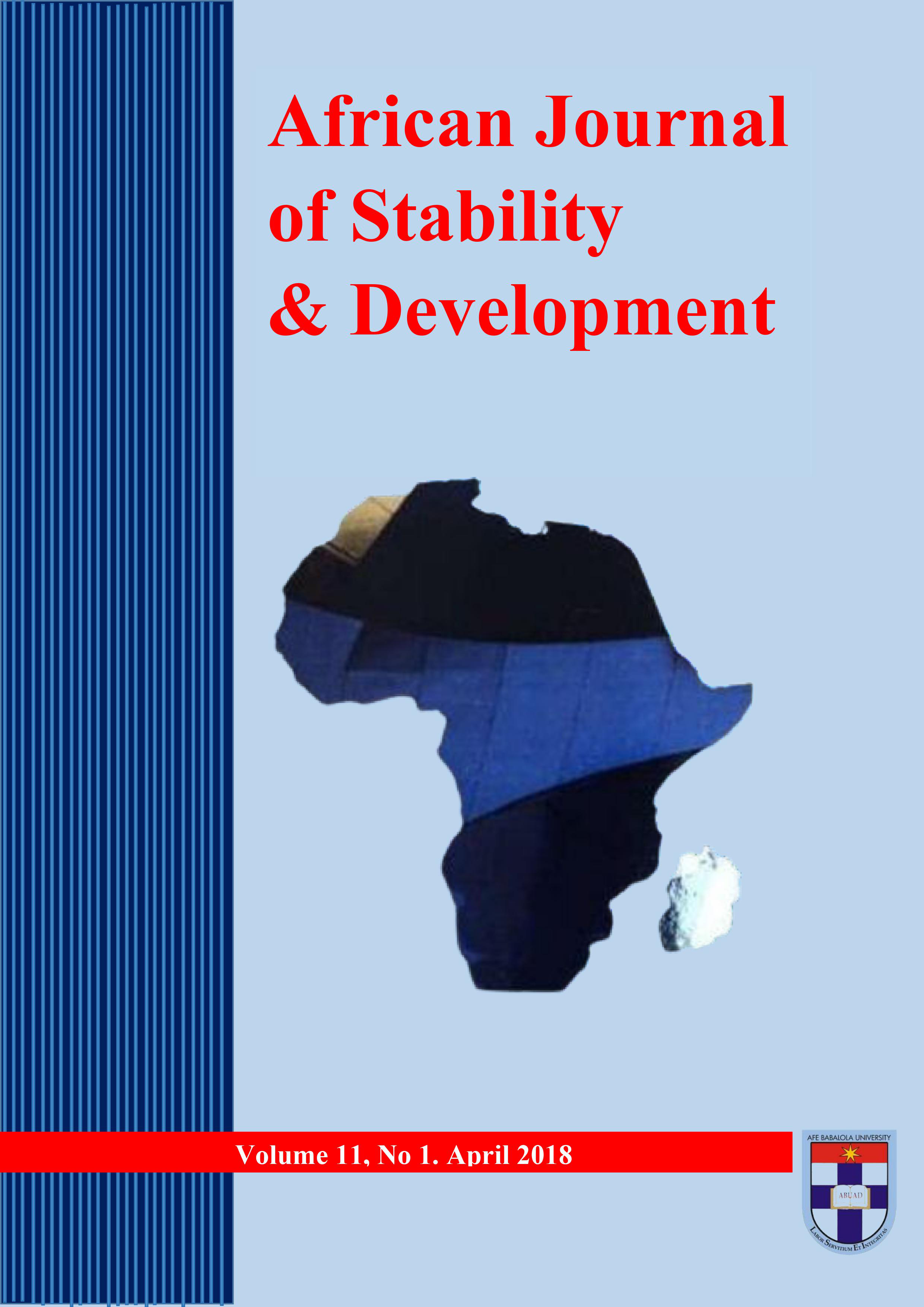Youth Participation in Governance and Structural Economic Transformation in Zimbabwe
Main Article Content
Abstract
This paper, Youth Participation in Governance and Structural Economic Transformation in Zimbabwe, assesses the level of participation in economic, elections and governance processes by Zimbabwean youth. It also depicts the barriers to such participation and issues that youths view as important to them. Finally, it proposes solutions that can be applied to achieve youth-inclusive structural transformation and enhance their participation therein. The study was carried out using quantitative methodologies. A survey was carried out to collect data, which in turn was analysed using SPSS. The analysis finds evidence that youth participation is low across all sectors. The youths are economically side-lined, largely unemployed and living in poverty given the low income they earn. They lack skills in business management, vocational and technical areas, civic education, elections as well as skills on how to engage government. Their participation in elections and governance processes is low and it is hampered by restrictive political structures, lack of interest, lack of information and lack of funds amongst other things. It was observed that decision making processes are not improving in becoming more participatory and youth inclusive. Whilst some youths are ready to run for public office or start their own businesses, they need support for their participation to be meaningful. The youths need space to freely participate in politics and development without restrictions as well as getting support through leadership training. Policymakers need to design programmes that close the skills gap, give youths more access to means of production and support them to be employment creators.
Downloads
Article Details
Authors hold the copyright of all published articles except otherwise stated.
References
Argenti, N. (2002). Youth in Africa: A major resource for change. In A. De Waal & A. Nicholas (Eds.), Young Africa: Realising the rights of children and young people (pp. 123–54). Asmara: Africa World Press, Asmara.
Arnot, M., & Swartz, S. G. (2013). Youth citizenship and the politics of belonging: Introducing contexts, voices, imaginaries. In M. Arnot & S. G. Swartz (Eds.), Youth citizenship and the politics of belonging (pp. 1–10). Oxon: Routledge.
Berents, H., & McEvoy-Levy, S. (2015). Theorising youth and everyday peace(building). Peacebuilding, 3(2), 115–125. https://doi.org/10.1080/ 21647259.2015.1052627.
Checkoway, B. (2009). Youth civic engagement for dialogue and diversity at the metropolitan level. The Foundation Review, 1(2), 41–50.
Checkoway, B. (2011). What is youth participation? Children and Youth Services Review, 33(2), 340–345. https://doi.org/10.1016/j.childyouth.2010.09.017. Checkoway, B., & Aldana, A. (2013). Four forms of youth civic engagement for
diverse democracy. Children and Youth Services Review, 35, 1894 –1899. Evans, S. D., & Prilleltensky, I. (2007). Youth and democracy: Participation for personal, relational, and collective well-being. Journal of Community Psychology, 35(6), 681–692.
Flanagan, C., & Levine, P. (2010). Civic engagement and the transition to adulthood. The future of children, 20(1), 159–179.
Lührmann, A. (2013). Enhancing youth political participation throughout the electoral cycle: A good practice guide. New York: United Nations Development Programme.
Lundvall, B.-Å., & Lema, R. (2014). Growth And Structural Change In Africa: Development Strategies For The Learning Economy. African Journal of Science, Technology, Innovation and Development (Vol. 6). https://doi.org/ 10.1080/20421338.2014.979660.
McEvoy-Levy, S. (2012). Youth spaces in haunted places: Placemaking for peacebuilding in theory and practice. International Journal of Peace Studies, 17(2), 1–32.
McMillan, M., & Headey, D. (2014). Introduction– understanding structural transformation in Africa. Elsevier.
Mercy Corps. (n.d.). Youth and conflict: Best practices and sessons learned. Oregon: Mercy Corps. Retrieved from https://www.mercycorps.org/sites/ default/files/youth_and_conflict_best_practices_-_hi_res_final.pdf.
Mutisi, M., Olonisakin, F., & Ismail, O. (2017). Youth, economic vulnerability, socio-political exclusion, and violence in Africa. Toronto: International Development Research Centre (IDRC).
Nkurayija, J. D. L. C. (2011). The Requirements for the African Continent’s Development: “Linking Peace, Governance, Economic Growth and Global Interdependence.” Berlin.
O’Higgins, N. (2017). Rising to the youth employment challenge: New evidence on key policy issues. Geneva: International Labour Office.
OECD. (2013). African economic outlook: structural transformation and natural resources. Abuja.
Qasem, A. (2013). Five barriers to youth engagement, decision-making, and leadership in Yemen’s political parties. Amplifying Youth Voices. London: Saferworld.
RAU. (2013). Key statistics from the June 2013 voters’ roll. Harare: Research and Advocacy Unit.
UNDP-UN Environment. (2017). Accelerating sustainable development in Africa: Country lessons from applying integrated approaches. New York, N.Y. UNDP. (2014). UNDP Youth Strategy 2014-2017. New York: United Nations Development Programme.
UNESCO Beirut. (2011). Arab youth: Civic engagement and economic participation. (Management of Social Transformation, Ed.). Beirut: UNESCO Regional Bureau - Beirut.
UNPY. (2012). Regional Overview: Youth in Africa. New York: United Nations Programme on Youth.




